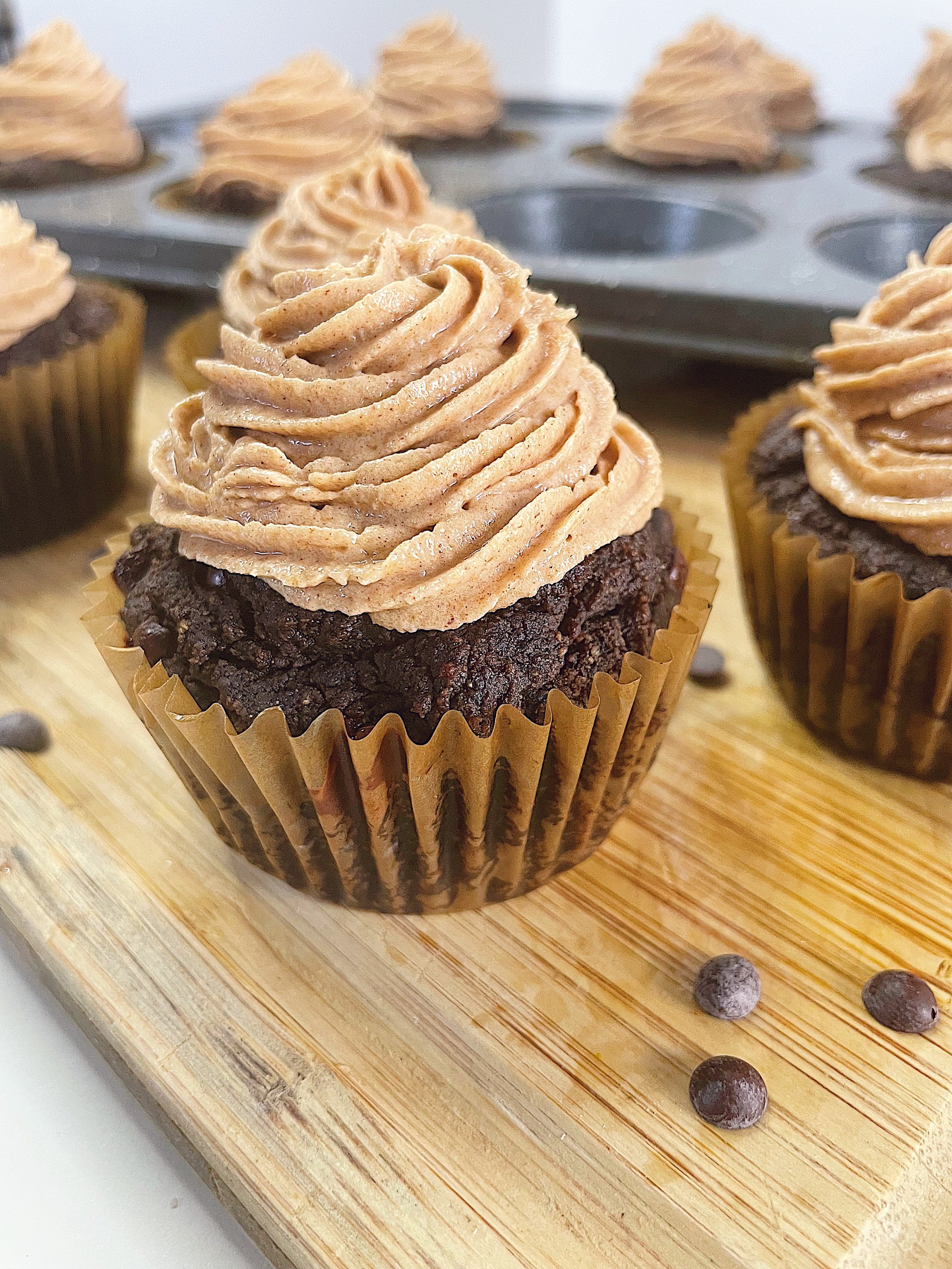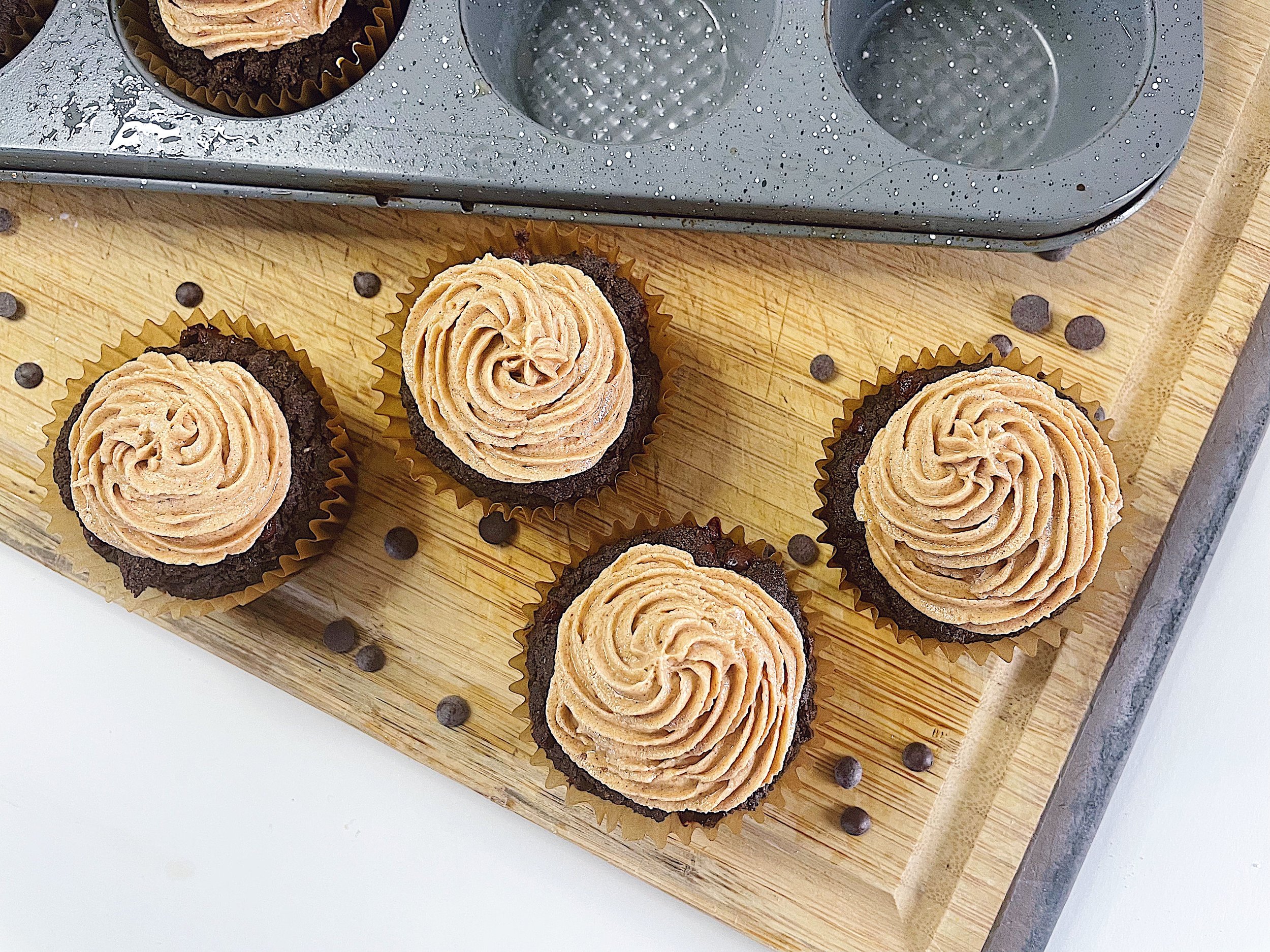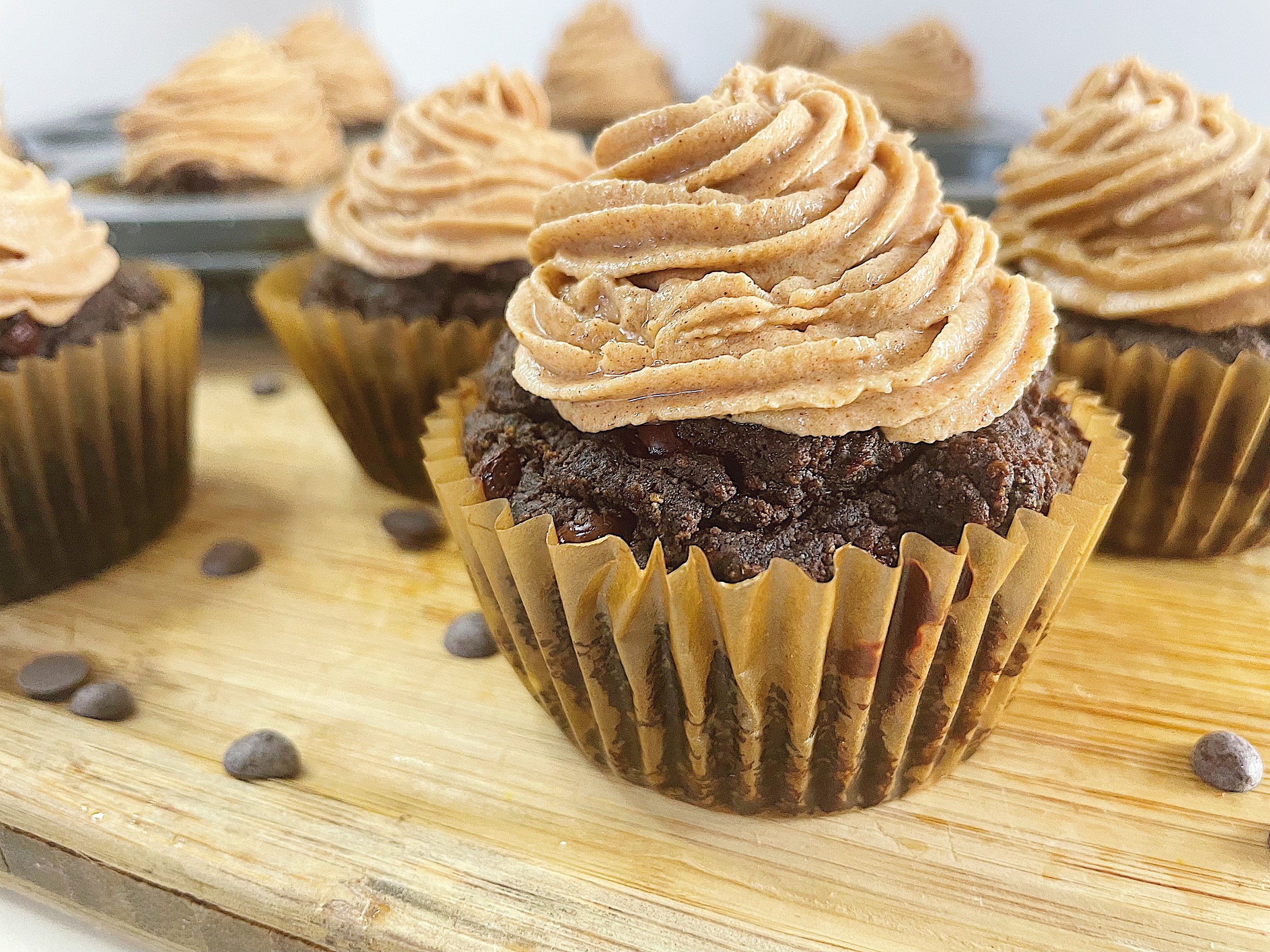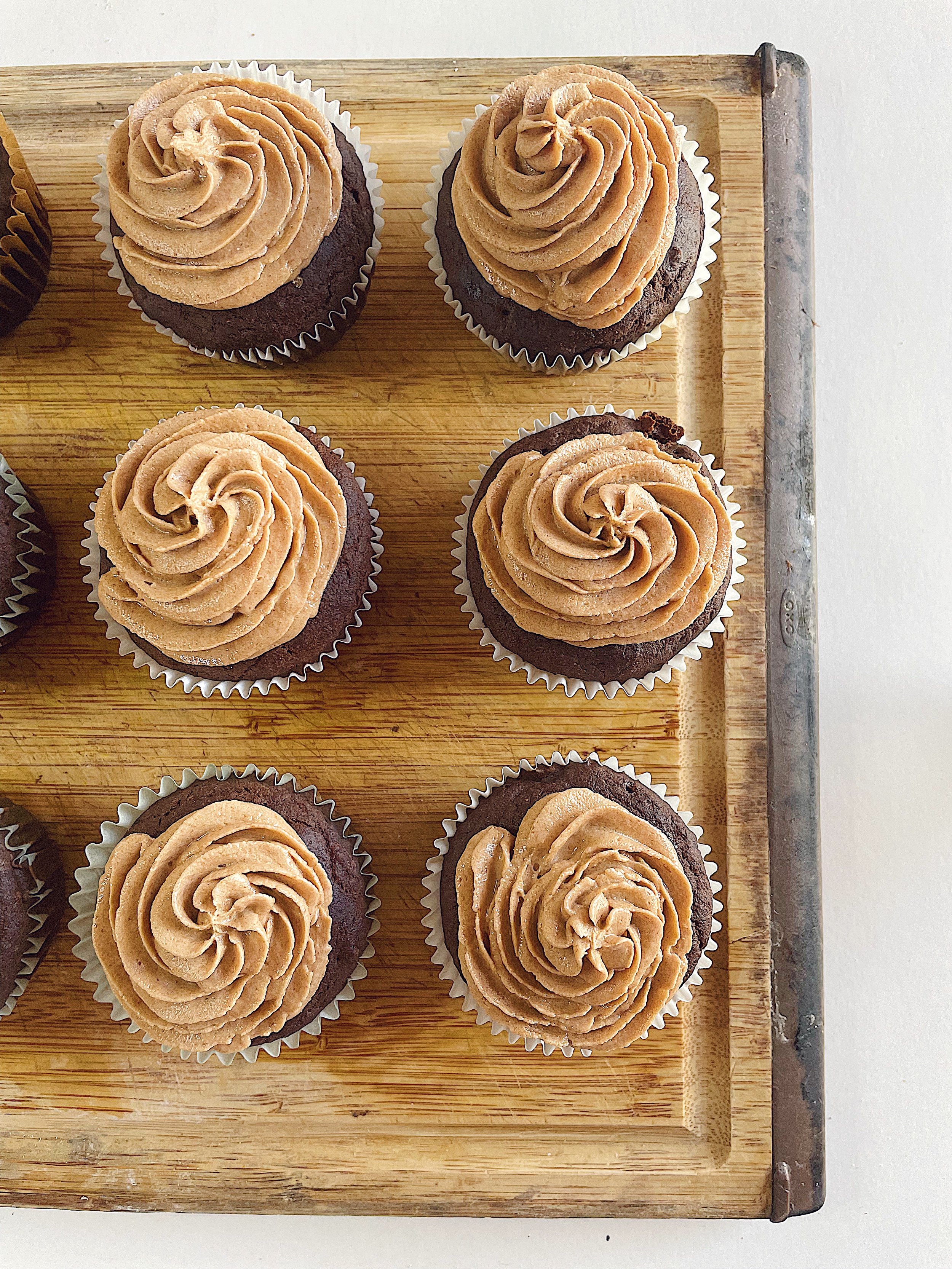Double Chocolate Chip Cupcakes
This is one of my favorite chocolate chip cupcake recipes. You can make it in one bowl. It’s sugar free, grain free, dairy free, egg free, paleo and is compliant with phase one of the Autoimmune Protocol.
In this recipe and in all of my recipes that call for either cacao or cocoa, I use carob as a substitute. Unlike chocolate, carob is naturally anti-inflammatory and much higher in naturally occurring sugars than cacao as well.
If you’re autoimmune compromised or have gut health issues using carob may be a better option for you long term. The use of carob here also eliminates the need for any added sugar in this recipe as well since carob is sweet in and of itself.
Ingredients used:
Tigernut flour: Tigernuts are not actually nuts at all but small tuberous vegetables that are grown similarly to potatoes. They have a sweet, nutty taste and have a number of nutrient dense health benefits. Most importantly, they are 100% anti-inflammatory. I would best describe the tigernut as a fantastic replacement for almond flour. Whereas almond flour can be a source of inflammation for many folks, tigernuts have no known inflammatory markers making them a safe and delicious flour to consume
Plantain Flour: Plantain flour comes from the plantain fruit which is harvested when it’s green, dehydrated and then blended into a flour. I love using this flour as an addition to my bakes. It adds a nice nutty flavor.
Cassava: Cassava is native to Brazil and South America. It’s similar in shape to a sweet potato but is longer and brown on the outside. Inside the flesh is white. Like sweet potatoes and yams, cassava is also a tuber that is often made into a flour or is eaten on it’s own just like a potato. This root vegetable can be use as a substitute for many potato based recipes. It’s flour may also act as a 1:1 flour replace in some recipes as well.
Tapioca starch: Tapioca starch comes from the cassava plant and is the starch of the cassava root.
Arrowroot starch: Arrowroot is native to Guyana, Eastern Brazil, Southeast Asia, Australia and South Africa. Once this tuberous vegetable begins to become starchy, it is harvested, dried and powdered.
Eggs & Gelatin: If you are allergic to eggs, you may use gelatin as a substitute instead. Gelatin is the safest alternative for folks with allergies and gut health issues. I recommend using bovine gelatin to replace your egg. See notes below for how to make it
Substitutions (w/ links):
Almond flour: If you’re allergic to nuts or avoiding almonds while on the autoimmune protocol, you can substitute Tigernut flour in many recipes as a 1:1 sub. I usually purchase my almond flour from Trader Joe’s or Anthony’s on Amazon.
Tigernut flour: If you don’t have access to tigernut flour, you may use almond flour instead. It has a similar texture but comes from the almond nut whereas tigernuts are not a nut at all but a tuber. I use the gemini brand of tigernut flour which can be purchased at whole foods or on amazon.
Plantain flour: Plantain flour is made from unripe green plantains, is dehydrated and then ground into a flour. If you can’t find any, a good substitute is green banana flour which is made in the same way.
Cassava flour: Cassava flour is a fantastic anti-inflammatory plant to use. You may try substituting with tapioca flour which is derived from the cassava root. Or, you may try almond flour as well.
Carob powder: Carob is my go to for sweet treats. I don’t recommend using traditional cocoa or cacao powder because it is more bitter than carob. Carob is naturally sweet and when added to baked goods, creates a nice sweet flavor. When you swap it for cocao powder, you add in a bitterness that requires extra sweetener. If you do decide to use cacao instead of carob, I would recommend adding in 1/4 - 1/3 cup coconut sugar to increase the sweetness profile.
Arrowroot flour & Tapioca Starch: These are basically interchangeable in most of my recipes. When indicated, you may swap one out for the other. I purchase these either from almost any grocery store - HMart, 99 Ranch, Whole foods, etc and also on amazon.
Coconut milk: I use a lot of coconut products. If you are allergic to coconut milk, I recommend trying almond or cashew milk. Alternatively, you may try making your own nut milk using tigernut flour or making some banana milk with banana and some water.
Gelatin Egg:
To make your gelatin egg, bring a small amount of water to a boil. Add 2 tbsp boiling water and 1 tbsp room temperature water to a small dish. Then, slowly pour in 1 scoop or 10g of bovine gelatin to the mixture. as you pour, stir with a spoon or chopstick to ensure you get a smooth blend. pour this mixture into your bake. It will harden as you continue working.
Ingredients:
169 / 2 small bananas
3/4 cup + 2 TBSP tigernut flour
1/4 cup + 2 TBSP plantain flour
1/2 cup arrowroot flour
1 tsp baking soda
1 cup full fat coconut milk
1 TBSP avocado oil
2 TBSP apple cider vinegar
1 serving Gelatin + 2 TBSP boiling water + 1 TBSP room temp water (or 1 egg)
1/2 cup carob powder
50g collagen (optional)
Frosting:
1 package eat gangster salted choconot
Preparations:
Mash the banana in a bowl with a fork. If using an egg beat it in now
Add in tigernut flour, plantain flour, arrowroot flour and carob powder followed by baking soda.
Boil a pot of water and mix 2 tbsp boiling water with 1 tbsp room temp water. Add in 1 serving gelatin and stir vigorously for 20 seconds. Immediately mix in with the rest of your ingredients. (Skip this step if using an egg)
Then add in avocado oil and apple cider vinegar. Stir well to combine and transfer to cupcake tins
Bake at 350 for 25-30 minutes or until a toothpick comes out clean.
Wait until the cupcakes have cooled. Then, prepare the frosting as per package instructions. Transfer to a piping bag and swirl your frosting on.





